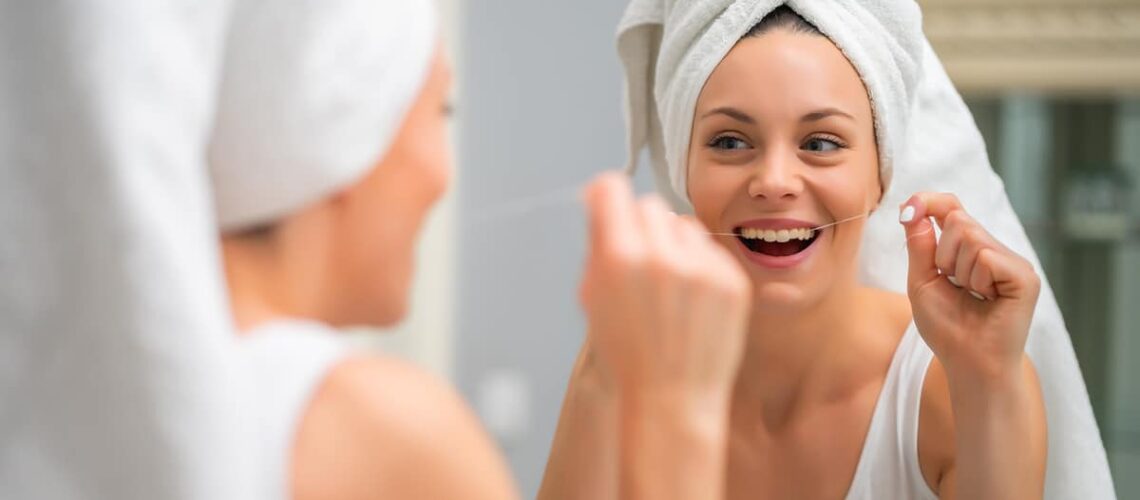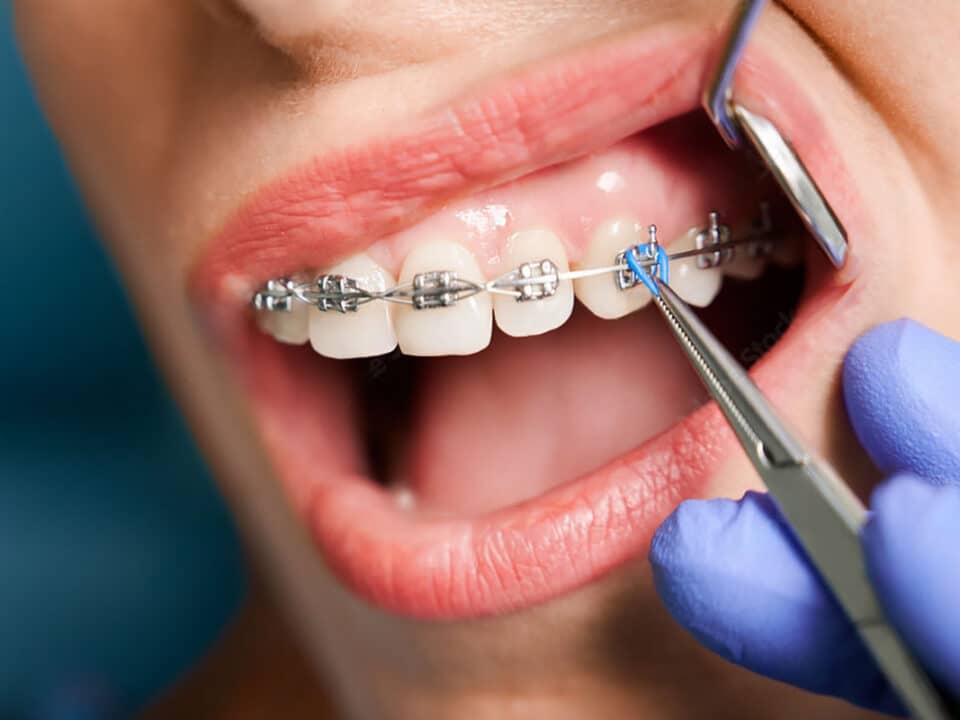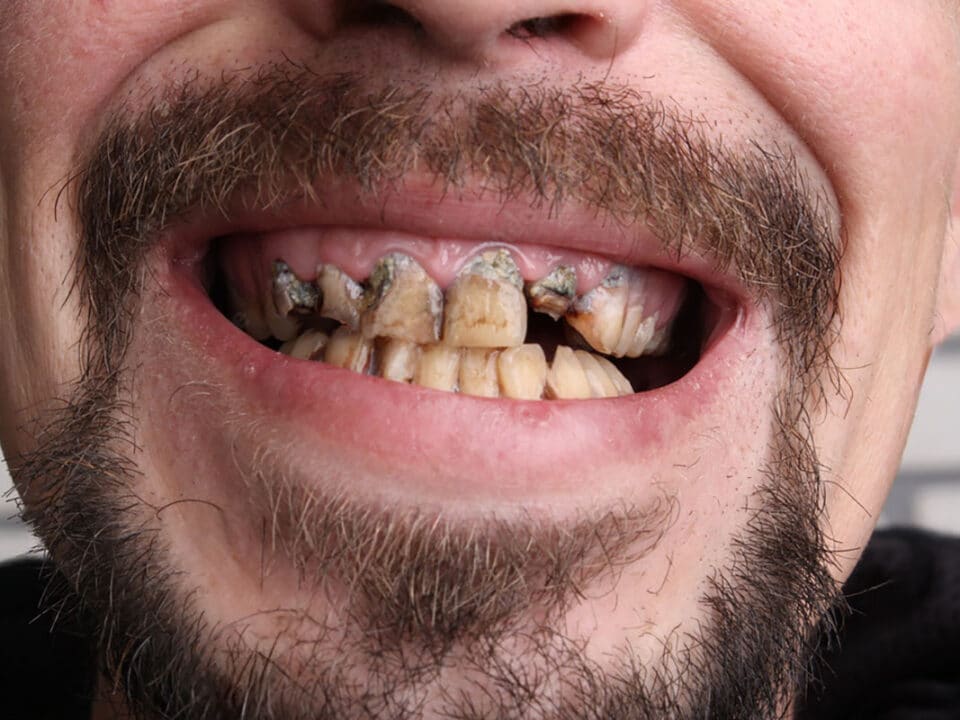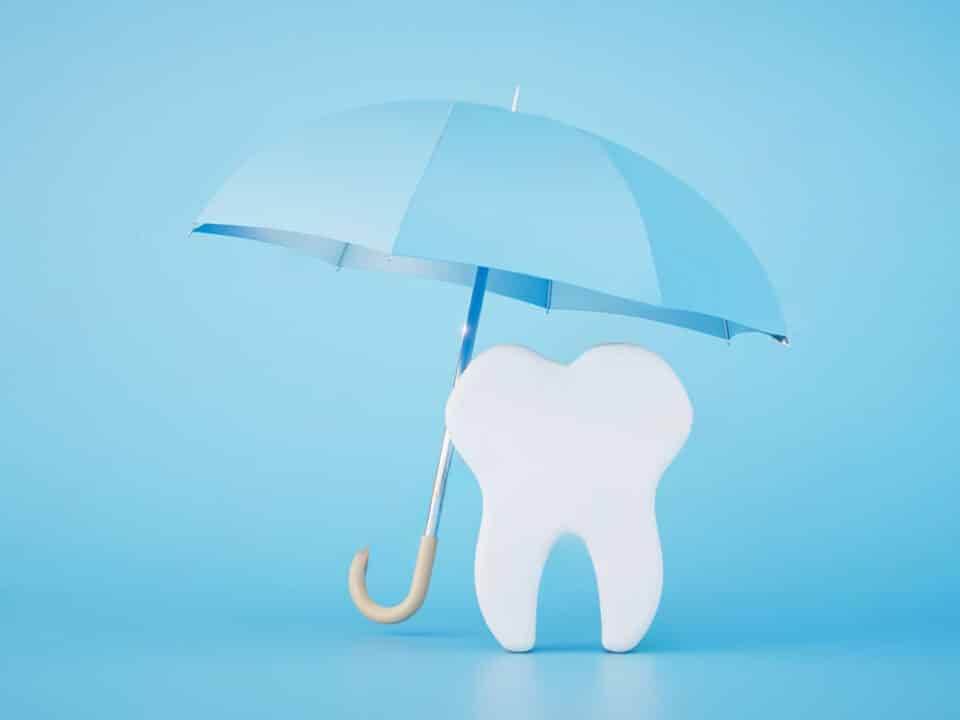Table of Contents
Your mouth will never feel as clean as when you’ve just left the dentist’s office after a cleaning appointment, but if you want to hang onto that fresh feeling as long as possible, here’s what you need to learn about how to keep your teeth clean between dental cleanings.
Oral health is about daily dental care routine and living a healthy lifestyle. The more you care for your mouth, the less time you’ll spend at the dentist – it’s generally a direct correlation. You should always keep up to date with visiting your dentist (every six months), but the risk of needing more than a professional cleaning and inspection is lessened by paying attention to your oral health yourself. This means you’ll not only be healthier, but you’ll save a lot of money.
Why you need to know how to keep your teeth clean between dental cleanings
We all love that fresh from the dentist clean feeling that we get after having our teeth professionally cleaned. Unfortunately, that feeling doesn’t last all that long and usually fades after a few weeks. Then it’s back to our teeth feeling rougher, our breath a little funkier, and plaque building near the gumline and between our teeth. It’s enough to make you want to go back to the dentist for another deep cleaning session, but who has the time or can afford that ten times a year?
We all know that brushing and flossing are the pillars of oral hygiene, but dental cleanings are the most important aspect of taking care of your oral health. No matter what we do at home, we won’t be able to stop plaque from building, which means we need a minimum of a professional dental cleaning twice annually. It’s also very important for pregnant mothers to get regular dental cleanings because they are at increased inflammation risk.
Luckily, there are some things we can do to keep our teeth as clean as possible from home, so keep reading as we discuss what you can do to keep your mouth clean in-between dental cleanings:
1. Keep a healthy diet

While this is a good idea for more reasons than oral health, reducing sugar and soda is great for your teeth.
Drinking soda regularly means your teeth will be assaulted by citric acid and phosphoric acid, which eat away at the enamel and become susceptible to nasty cavities. Soda occasionally is ok, but you’d be best off sticking to water for hydration. Adding fruits or mint leaves can make a huge difference for your palate if you crave more flavour.
Lots of sugar in your diet is also not great for your teeth. That’s because sugar makes your mouth more acidic and helps bacteria grow. This means plaque will build, harming your gums and tooth enamel and leading to premature tooth decay. Limiting your sugar intake, especially from sweet treats and sugary drinks, will greatly benefit your oral health and help keep your teeth clean during dental checkups. If you do eat or drink sugary things, it’s recommended to rinse, brush and floss afterwards.
Here are some additional tips and food choices that can contribute to better oral health:
Limit sugary foods and drinks
Sugar is one of the main contributors to tooth decay. When bacteria in the mouth feed on sugars, they produce acids that can erode tooth enamel. Limit your intake of candies, sugary drinks, and desserts.
Reduce acidic foods and beverages
Acidic foods and drinks, such as citrus fruits, tomatoes, and sodas, can weaken tooth enamel. It’s best to consume them in moderation and not brush your teeth immediately after consuming acidic foods, as this can cause further enamel erosion.
Consume dairy products
Foods like milk, cheese, and yogurt are high in calcium and phosphates, which can help to remineralize teeth and strengthen enamel. Cheese also stimulates saliva production, which helps to neutralize acids.
Eat crunchy fruits and vegetables
Raw fruits and vegetables like apples, carrots, and celery are nutritious, but their crunchy texture helps clean teeth. Chewing these foods stimulates saliva production, which helps to wash away food particles and acids.
Drink water
Water should be your beverage of choice, as it helps to rinse away food particles and acids. Drinking fluoridated water can also help to strengthen tooth enamel.
Include foods high in vitamins and minerals
Vitamins such as vitamin C are important for gum health, while minerals like calcium and phosphorus are essential for maintaining strong teeth. Include a variety of fruits, vegetables, lean proteins, and dairy in your diet.
Incorporate foods rich in antioxidants and omega-3 fatty acid
Antioxidants can help to combat bacteria that cause inflammation and periodontal disease. Foods like nuts, berries, and fish are great sources.
Choose sugar-free products
If you have a sweet tooth, opt for products sweetened with xylitol, a sugar substitute that doesn’t contribute to tooth decay and may even have anti-cavity properties.
Limit snacking between meals
Constant snacking can expose your teeth to acids for extended periods. If you need a snack, select something low in sugar and acid, and follow it with a glass of water.
Watch out for starchy foods
Foods like chips and crackers can easily get stuck between teeth, providing a food source for bacteria. When you consume these, flossing to remove food particles is particularly important.
Consume green and black tea
These teas contain polyphenols that slow the growth of bacteria associated with cavities and gum disease. Choose a tea without sugar if possible.
2. Say no to smoking
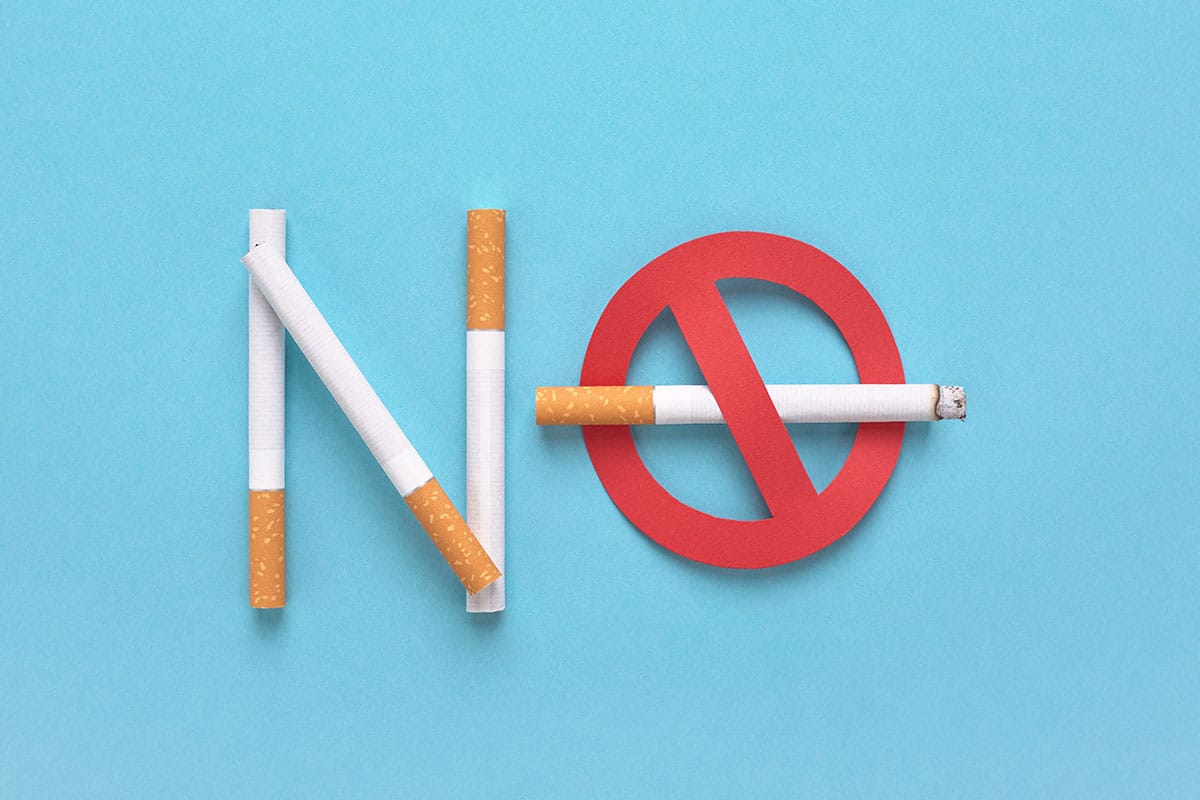
Smoking is bad for your health and your teeth. Even if you take every precaution to keep your teeth white even if you smoke, the habit will rapidly undo all the cleaning work your dentist did in a hurry. Nicotine and tar will coat your mouth and teeth, which is especially harmful to your gums. This coating also increases bacteria and plaque production, increasing the risk of tooth decay and gum disease. Smokers are at higher risk of tooth loss, gum disease and oral cancer. This is one habit we definitely recommend you kick to the curb. Smoking is a prime example of the opposite of how to keep your teeth clean between dental cleanings for the following reasons:
Tooth discoloration
The tar and nicotine in tobacco can cause staining of the teeth. Over time, this can lead to yellowing or even a brownish discoloration, which is often difficult to remove.
Increased buildup of plaque and tartar
Smoking can lead to an increased buildup of plaque and tartar on the teeth, which are precursors to cavities and gum disease.
Tooth loss
Due to the increased risk of gum disease and the weakening of the structures that support the teeth, smokers are more likely to experience tooth loss compared to non-smokers.
3. Brush often and brush the right way
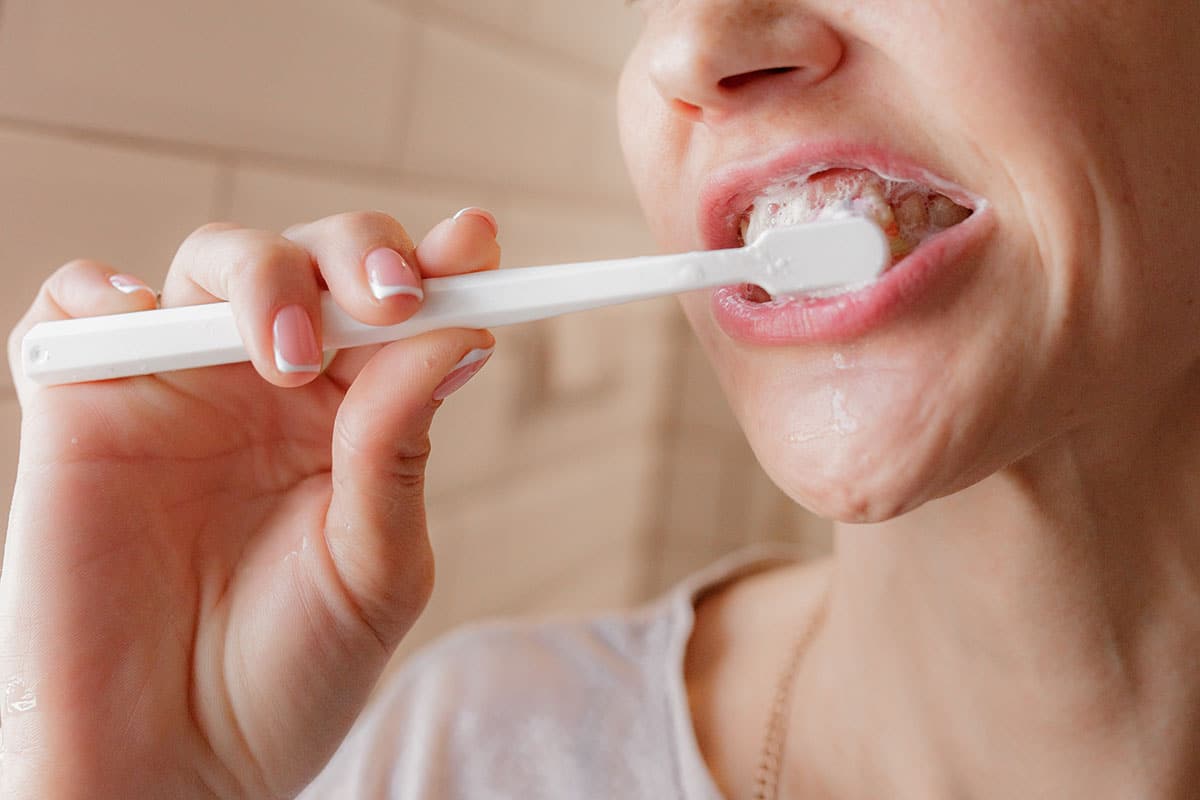
You should brush your teeth at least twice daily, usually in the morning and at night before you sleep. Even better is to brush after every meal or if you drink something other than water. Frequent brushing will help keep most bacteria-causing elements out of your mouth and your teeth clean between professional dental cleanings. Even a good rinse after eating or drinking is beneficial.
However, frequency is only half of the brushing formula for healthy teeth. It’s also important to brush using a proper technique because otherwise, you could end up doing harm.
- Choose a soft or super soft toothbrush (electric if possible)
- Use fluoride or sensitivity toothpaste
- Keep your brush at a 45-degree angle
- Brush using circular motions
- Maintain a light pressure
- Go slowly and brush only your teeth and not your gums
- Finish by brushing the top surface of your tongue as well
Keep in mind that one of the worst things you can do for your teeth and gums is brushing too aggressively. Putting too much pressure as you brush can make your teeth more porous and sensitive or harm your gums, leading to gum recession.
We recommend speaking to your dentist about the best toothbrushing technique for your teeth and how to brush your teeth properly, paying attention that you do it right every time. It might seem cumbersome at first, but as with everything you do repeatedly, brushing with a proper technique will be a habit in no time.
4. Don’t skip the floss

Brushing your teeth and flossing go hand in hand, and your brushing routine alone won’t get to the tight, hard-to-reach places in between your teeth. That’s where flossing comes in, and as dentists, we always recommend our patients do so every time they brush. We advise that flossing is just as important, if not more, than brushing because bacteria love those small tight spaces. The small crevices between your teeth allow bacteria to take hold and begin turning into tooth decay-causing plaque. Caring for these areas is vital to keeping your teeth clean between dental cleanings.
How to floss correctly
Flossing is key, but as with brushing, you need to be doing it right. When you floss, make sure you’re paying attention to the following:
Wrap the floss around your fingers: Wrap most of the floss around the middle finger of one hand and the rest around the middle finger of the other hand. This will help you grip and control the floss effectively.
Hold the floss tightly: Hold the floss tightly between your thumbs and forefingers, leaving about an inch or two to work with.
Gently insert the floss: Gently slide the floss between two teeth. Don’t snap the floss into your gums, which can cause injury.
Create a C shape: Curve the floss into a ‘C’ shape against the side of one tooth once it is between your teeth.
Move the floss up and down: Gently move the floss up and down, rubbing it against the side of each tooth. Ensure you go beneath the gumline by gently curving the floss, but be careful not to floss too harshly beneath the gums.
Use a new section for each tooth: As you move from one tooth to the next, unroll a fresh section of floss from the finger of one hand while rolling the used floss onto the finger of the other hand. This ensures that you are always using a clean section of floss.
Don’t forget the back teeth: Be sure to floss the back sides of your back teeth, where a toothbrush cannot reach them effectively.
Rinse your mouth: After flossing, rinse your mouth with water or mouthwash to remove any loosened plaque or food particles.
Check here for more information about how to floss.
5. Rinse, brush and floss after meals
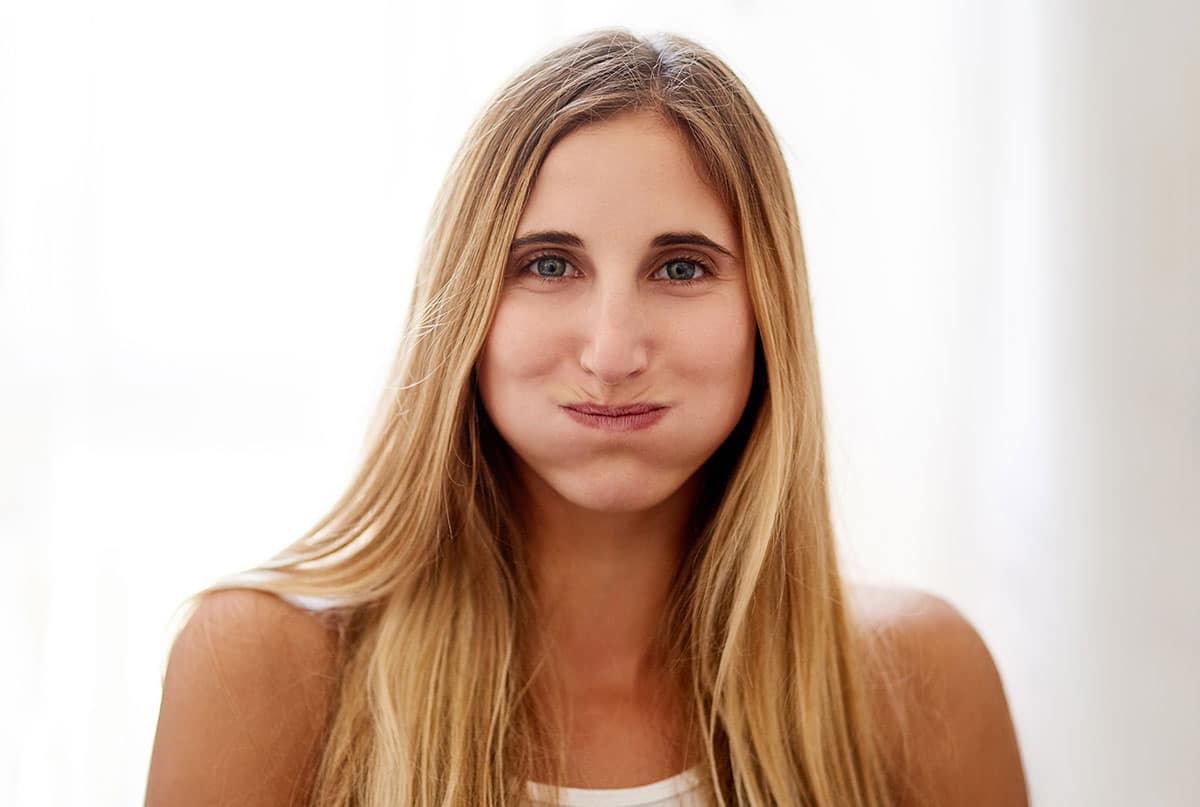
On top of the standard morning and evening oral hygiene care sessions, you can take your routine to a higher standard by rinsing, brushing and flossing after meals. Doing so will flush away and remove most bacteria-causing elements from your mouth, helping you greatly reduce plaque buildup and tooth decay. It’s important to note that no matter how rigorous your at-home oral hygiene care is, at least two cleaning appointments with your dentist are still vital to maintaining a healthy mouth.
Brushing your teeth straight after eating something acidic (containing citric acid) is also not a good idea. This includes foods like grapefruits, oranges, lemons, sodas, and fruit drinks. These acidic foods weaken the enamel of your teeth, leaving them susceptible to damage from brushing. Waiting between 30 minutes to an hour before brushing your teeth will allow your saliva to neutralize the acidity and give your enamel time to begin remineralization.
The perfect after-meal oral care routine is to rinse your mouth thoroughly immediately after eating, then follow up with brushing and flossing after an hour, and of course, don’t skip the dentist.
6. Use an electric toothbrush
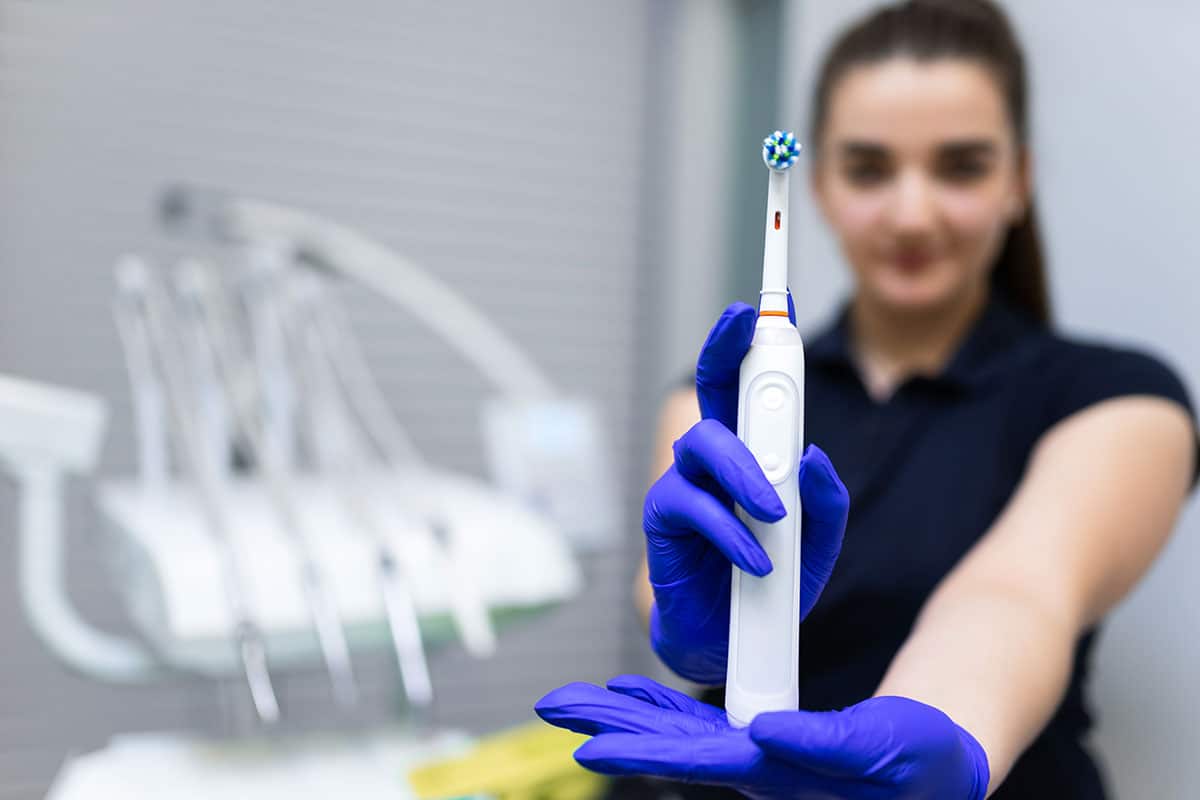
Are electric toothbrushes worth it? An electric toothbrush can offer several benefits over a manual toothbrush for maintaining oral hygiene. Here are the reasons why you should consider using an electric toothbrush:
More effective plaque removal
Electric toothbrushes are generally more efficient at removing plaque. The bristles vibrate or rotate to help break up plaque and remove it from teeth and gums.
Consistent brushing power
Unlike manual brushing, which can vary in pressure and thoroughness, electric toothbrushes provide consistent power, ensuring that your teeth are cleaned effectively every time you brush.
Ease of use
Electric toothbrushes require less manual effort. This particularly benefits individuals with dexterity problems, arthritis, or other conditions that make thorough brushing difficult.
Gentler on gums
Some people brush too hard with manual toothbrushes, leading to receding gums and tooth enamel erosion. Electric toothbrushes often have pressure sensors that let you know if you’re brushing too hard.
Better access to hard-to-reach areas
The smaller, round heads of many electric toothbrushes can make cleaning hard-to-reach areas like the backs of the molars and the gum line easier.
While electric toothbrushes offer many advantages and are the best way to keep your teeth clean between dental cleanings, it’s important to note that good brushing techniques and consistent oral hygiene practices are key to maintaining oral health, regardless of the type of toothbrush used.
7. Rinse with Mouthwash
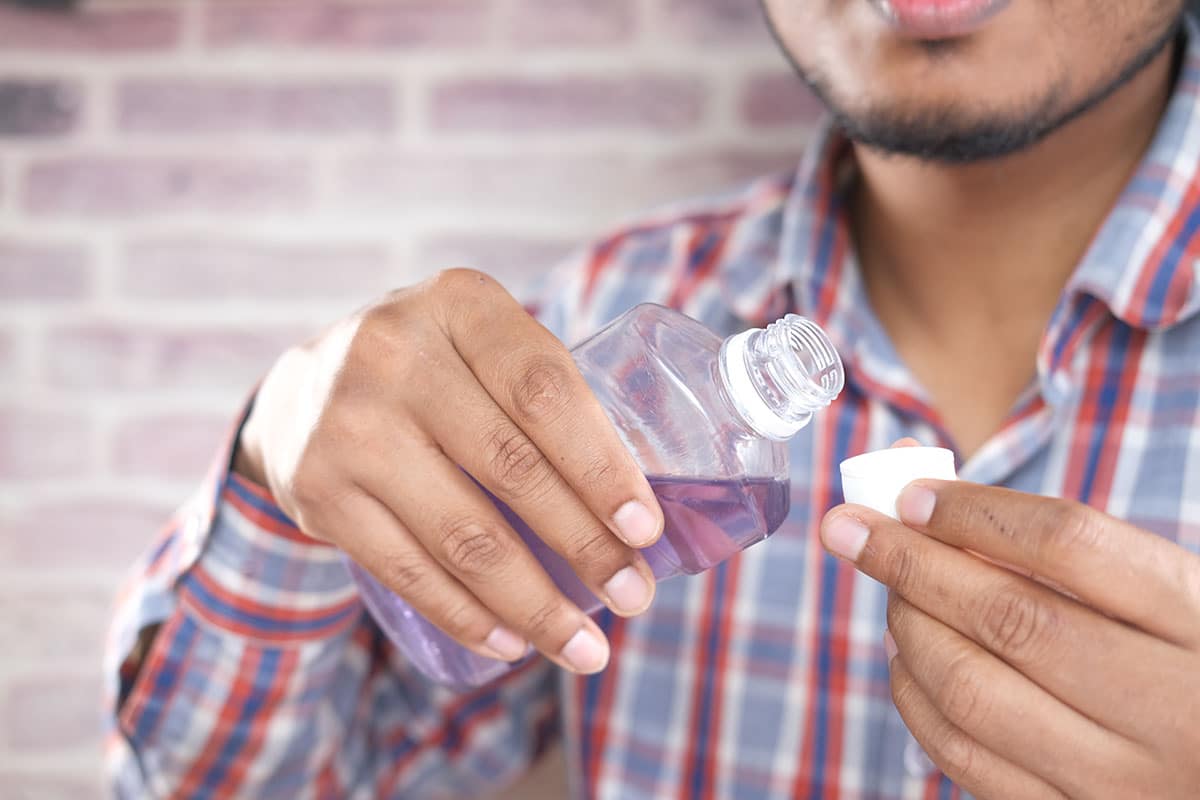
Use a fluoride mouthwash to help reduce plaque, strengthen teeth, and freshen your breath. Avoid mouthwashes that contain alcohol, as they can dry out the mouth. Here are 4 benefits of using mouthwash to keep your teeth clean:
Reduces plaque buildup
Some mouthwashes contain ingredients that can help prevent plaque buildup on the teeth. However, it’s important to note that mouthwash cannot remove existing plaque; that requires brushing and flossing.
Removes particles
Mouthwash can help to flush out loose particles in the mouth. Some people find it helpful to use mouthwash before brushing to rinse out any loose particles.
Strengthen tooth enamel
Mouthwashes containing fluoride can help strengthen tooth enamel, making it more decay-resistant.
Prevents tooth decay
With the help of fluoride and the ability to reduce bacteria, mouthwash can contribute to the prevention of tooth decay.
8. Chewing gum for a healthier mouth
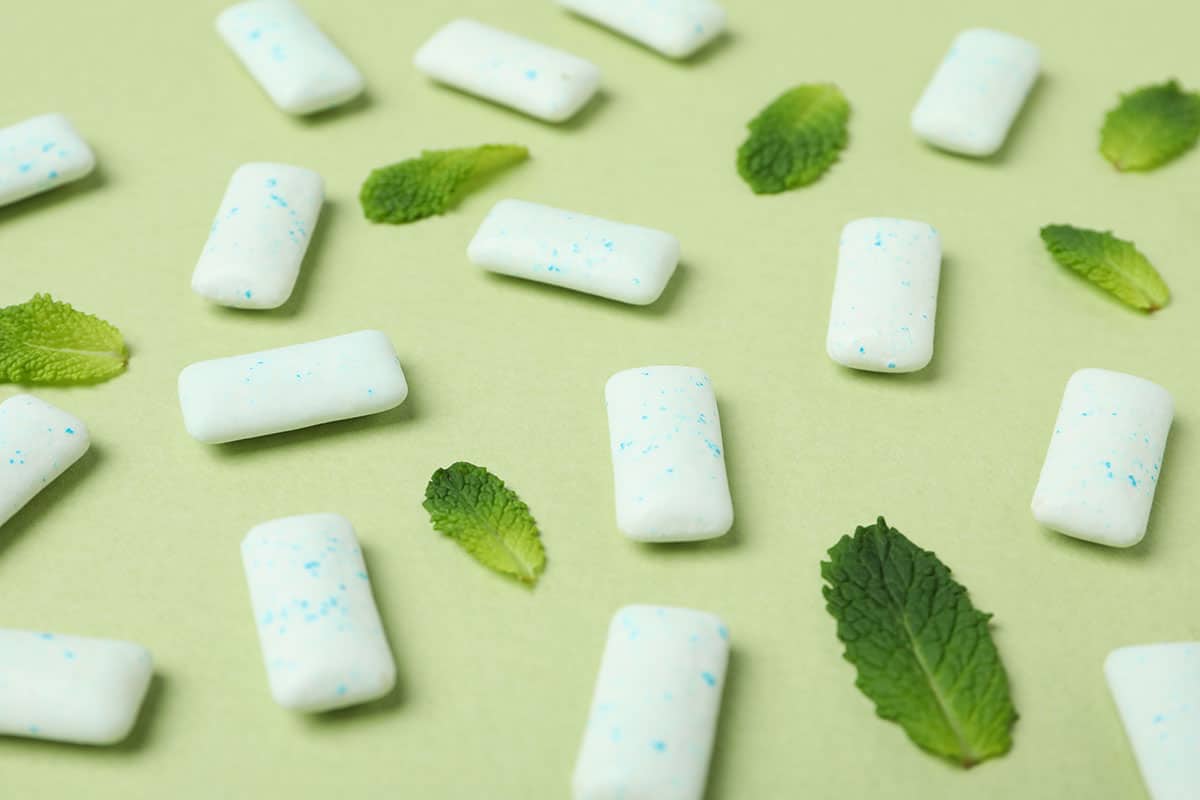
Sugar-free chewing gum can make a difference if you can’t rinse or brush after a meal. The chewing motion causes saliva production with natural antibacterial properties to help flush your mouth, keeping your teeth clean and your breath fresh. However, chewing gum does not replace regular brushing and flossing but complements these oral hygiene practices. Here are some reasons why chewing gum is good for oral health:
Stimulates saliva production
Chewing gum stimulates the production of saliva, which is the mouth’s natural defence against tooth decay. Saliva helps to neutralize acids produced by bacteria, wash away food particles, and remineralize tooth enamel.
Reduces tooth decay
Sugar-free gum, especially those containing xylitol, can help reduce the risk of tooth decay. Xylitol is a sugar substitute that cannot be metabolized by the bacteria in the mouth, thus reducing the amount of acid produced. In addition, xylitol has been found to inhibit the growth of Streptococcus mutans, one of the primary bacteria responsible for tooth decay.
Reduces plaque and tartar buildup
The mechanical action of chewing helps to dislodge food particles and plaque from the surface of the teeth, which can help reduce tartar buildup.
Helps with tooth sensitivity
Some gums contain ingredients like casein phosphopeptide-amorphous calcium phosphate (CPP-ACP), which can help remineralize enamel and reduce tooth sensitivity.
Minimizes staining
Increased saliva flow can help reduce staining by washing away particles that could contribute to discoloration.
9. Eat foods that naturally clean your teeth
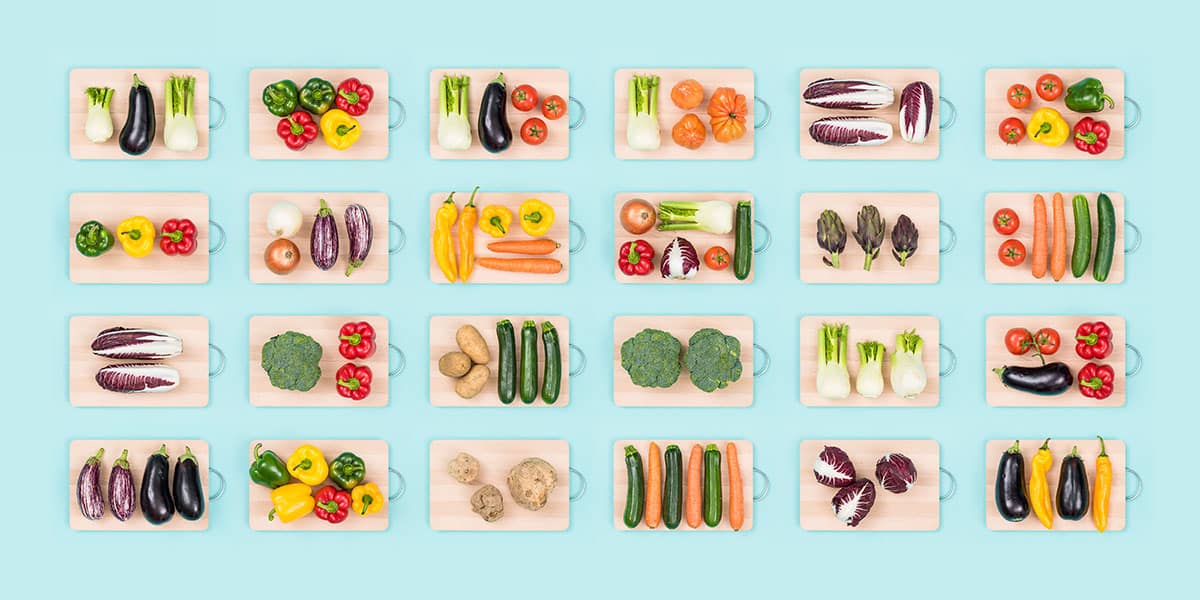
While sugary foods and sodas harm your teeth, others can improve oral health.
These foods can help clean your teeth naturally due to their texture, composition, or nutritional content. While these foods should not replace regular brushing and flossing, they can benefit your oral hygiene routine and keep your teeth fresh between cleanings. Here are some examples:
Apples: Often referred to as “nature’s toothbrush,” apples have a fibrous texture that can help to clean teeth and gums. Chewing an apple also stimulates saliva production, which can help to rinse away bacteria and food particles.
Carrots: Like apples, carrots are crunchy and full of fibre. Eating raw carrots at the end of a meal can increase saliva production and help clean the teeth’ surface.
Celery: The fibrous strands in celery can help to clean teeth by acting like dental floss. Celery is also a good source of vitamins A and C, which can benefit gum health.
Cheese: Eating cheese can help to raise the pH in your mouth, reducing the risk of tooth decay. Cheese also contains calcium and protein, nutrients that strengthen tooth enamel.
Leafy Greens: Spinach, kale, and other leafy greens are high in fibre, which requires more chewing and can help clean the teeth. They are also high in calcium, which helps to build enamel.
Almonds: Almonds are both crunchy and high in calcium and protein. The act of chewing almonds can help to remove plaque and strengthen the teeth.
Cucumbers: Cucumbers have a high-water content which can help to wash away bacteria and food particles, and their crunchiness can stimulate saliva production.
Strawberries: Strawberries are high in vitamin C and antioxidants. They also contain malic acid, which can naturally whiten the enamel.
Yogurt: Unsweetened yogurt contains beneficial bacteria, or probiotics, that can help to combat harmful bacteria in the mouth. It is also high in calcium and protein.
Another consideration is that if you’ve recently had dental work done, that could affect the foods you should eat. For example, this article; Foods to eat after wisdom teeth removal can help you learn more.
Can I skip the dentist?
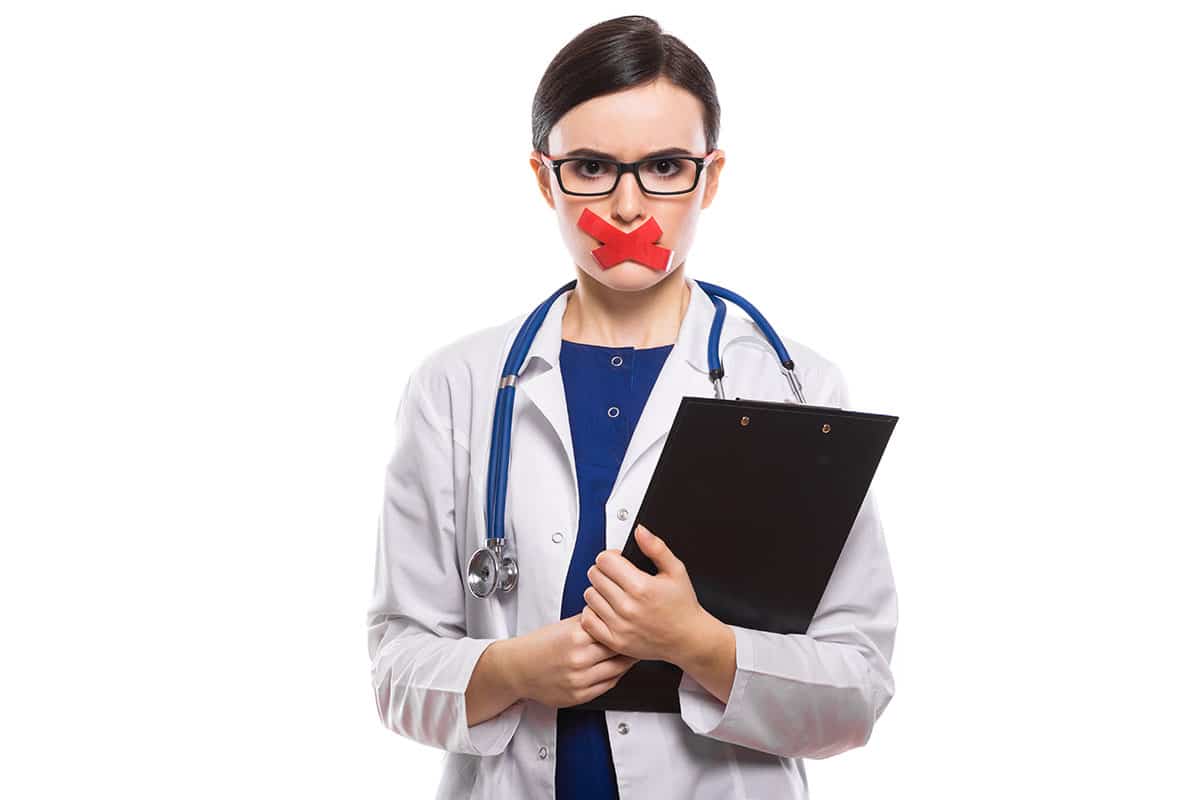
The more time and thought you put into caring for your teeth, the better off you’ll be, but that doesn’t mean you should skip regular visits to your dentist. Even with meticulous brushing and flossing, it’s difficult to remove all the plaque and tartar from your teeth, especially in hard-to-reach areas. Dentists and dental hygienists have the tools and expertise to perform more thorough professional cleanings than you can achieve at home.
Getting professional teeth cleanings is the best way to maintain oral health and catch potential issues quickly before they become real concerns. The sooner your dentist can fix the problem, the easier and cheaper it will be.
Don’t take your oral health for granted
If you don’t take care of your teeth and prioritize your oral health, there can be harmful consequences. You’ll be putting your mouth at risk of cavities, tooth decay, tooth loss, gum disease and even diminished overall health. Oral health is linked to several health issues, such as cardiovascular disease, respiratory infections, Alzheimer’s, dementia and diabetic complications. Ensure you don’t take your oral health for granted and prioritize your cleaning routine between dental cleanings.
If you need a dentist appointment for a professional cleaning or any other treatment, please get in touch with any of our GTA dental offices at your convenience.
Check us out on Facebook and Twitter for daily information about Oral Health from Martindale Dental, or visit our offices in Hamilton and St. Catharines.
Have more questions?
Please contact us for all inquiries or to book an appointment with one of our convenient clinic locations. We look forward to hearing from you.

